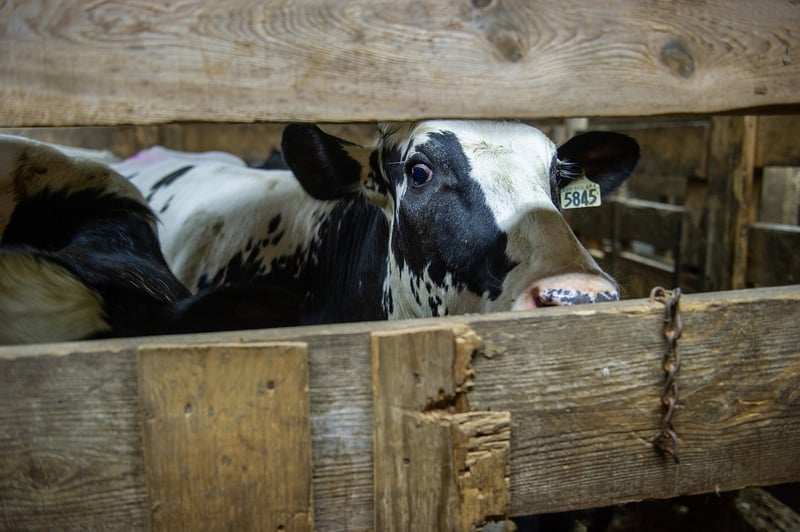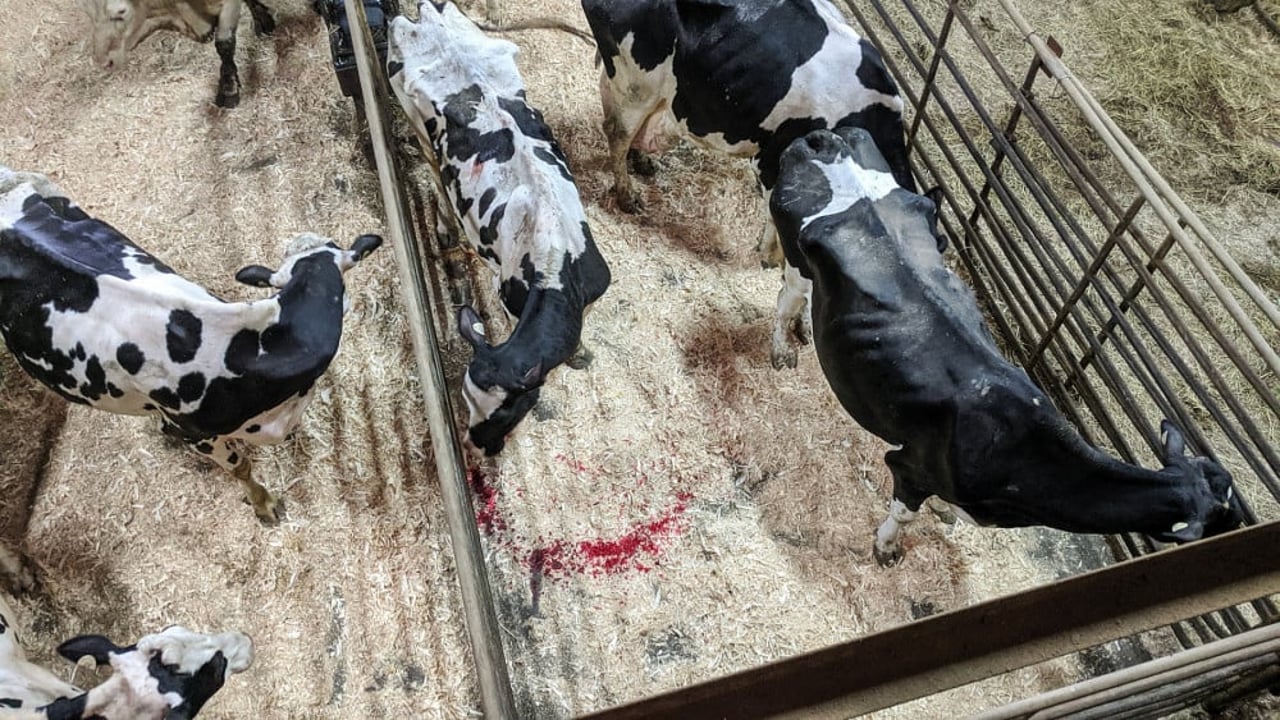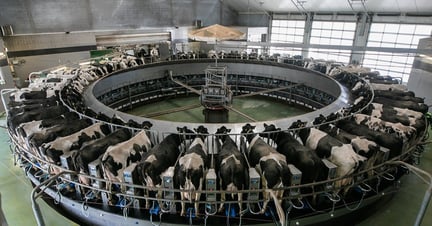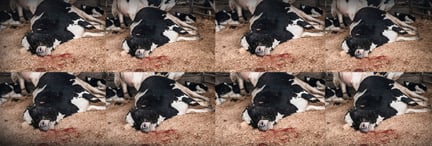
The neglected welfare of cull dairy cows: addressing the tragic reality for end-of-life dairy cows in Canada
Blog
Our new report sheds light on the often-overlooked animal welfare issues faced by cull dairy cows in Canada, from painful health conditions to long-distance transport and neglect. It offers key recommendations to improve their welfare and calls for a multi-stakeholder approach to address the systemic failures that perpetuate animal suffering.
World Animal Protection’s latest report, Milking the cow: the fate of Canadian cull dairy cows, highlights poor welfare and suffering often experienced by cull dairy cows.
The neglected welfare of cull dairy cows
Cull dairy cows are animals who are removed from the milking herd and sent to slaughter due to health or reproductive problems, or reduced milk production. But what happens to them before they reach their tragic end is a sad and overlooked reality.
Many cull dairy cows suffer from painful health conditions and injuries that compromise their welfare, such as lameness, general sickness, mastitis, and udder or teat injuries. And even though farmers are supposed to assess animals for fitness for transport before shipping, many cows are still sent to slaughter in a compromised condition.
Inspection reports from the Canadian Food Inspection Agency reveal that a shocking 24% of vehicles inspected contain cull dairy cows with welfare concerns, including those who are downed, lame, and emaciated. These animals are typically sent to auctions to be sold before being shipped long distances to slaughter, sometimes enduring lengthy journeys to slaughter plants in the United States.
At these auctions, cull dairy cows may languish for days with little or no food, water, or milking. This can lead to painful udder engorgement, making an already difficult situation even worse.
Transport is a stressful time for all farm animals, but cull dairy cows are particularly vulnerable. Their welfare often deteriorates from the time they leave the farm to the time they reach the slaughter plant, which can be as much as 7-10 days in some cases. Researchers at the University of British Columbia found that, on average, cows spend 82 hours, or about 3.5 days, in the system before being slaughtered.
For these fragile animals, this is a long and grueling journey with little intervention or treatment taking place. It's time to shine a light on the neglected welfare of cull dairy cows and work towards better treatment for these vulnerable animals.
The industry, producers, processors, government, and buyers – the system is failing cull dairy cows.
An emaciated dairy cow bleeds profusely from her nose while she stands in a holding pen at a cattle auction in Quebec, Canada. Sharing the pen with her are several other dairy cows, all showing a similar body condition. (Photo: Existence / We Animals Media)
Efforts to improve cull dairy cow welfare in Canada
At the end of their usefulness to the dairy industry, cull dairy cows are often slaughtered to become meat. While the current system is failing these animals, there are many compassionate people working hard to make things better.
Animal Health Canada (AHC) conducted an expert consultation in 2017, which identified factors contributing to the reduced welfare of these animals along with recommendations to improve the situation for these animals in Canada.
Research undertaken by the University of Guelph, the University of British Columbia, and other institutions have also contributed to greater awareness of the risk factors impacting cull cow welfare. These findings have led to stronger requirements in the revised draft National Farm Animal Care Council (NFACC) Dairy Code of Practice and educational resources developed by the Dairy Farmers of Canada to help producers better understand the cull cow marketing system and the economic benefits of culling healthy, fit cows.
Key recommendations to improve cull dairy cow welfare
To ensure the welfare of cull dairy cows in Canada, there is a need for increased enforcement and harmonization of rules and regulations prioritizing animal welfare. There is also a need to enable local slaughter and shorten transport times for cull cows, making other slaughter options available for compromised animals such as on-farm emergency slaughter, direct to slaughter designations, and mobile slaughter. Euthanasia should also be promoted as an acceptable and viable option for cull cows, and producers and auctions should have the tools and training needed to perform euthanasia.
By implementing these recommendations, among others, the welfare of cull dairy cows can be greatly improved, and these animals can be treated with the respect and care they deserve in their final days.
The industry, producers, processors, government, and buyers – everyone must be part of the solution
Improving the welfare of cull dairy cows requires a multi-stakeholder approach.
All stakeholders along the supply chain, including the dairy industry, dairy producers, government, processors, and buyers of cull cow meat (for example fast food restaurants), need to play an active role to improve the welfare of these animals.
World Animal Protection recommends implementing or strengthening measures in the following areas:
- Regulations and standards, including enforcement
- Educational initiatives
- Localized and on-farm slaughter, as well as euthanasia options
- Incentive and disincentive programs
- Increased private sector involvement and accountability
- Improved on-farm management practices
Check out page 21 of the report to learn more about the recommendations.
You can help end the suffering
Every single day in Canada animals suffer on factory farms. Sign our petition to the Federal government to demand a moratorium that will stop new factory farms in Canada.
A Canada with fewer factory farms is a Canada where more animals can flourish, living the content and natural lives that they deserve.
Banner photo credit: Julie LP / We Animals Media


